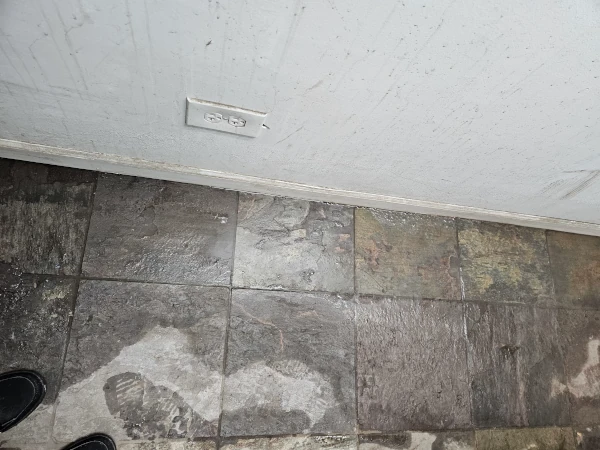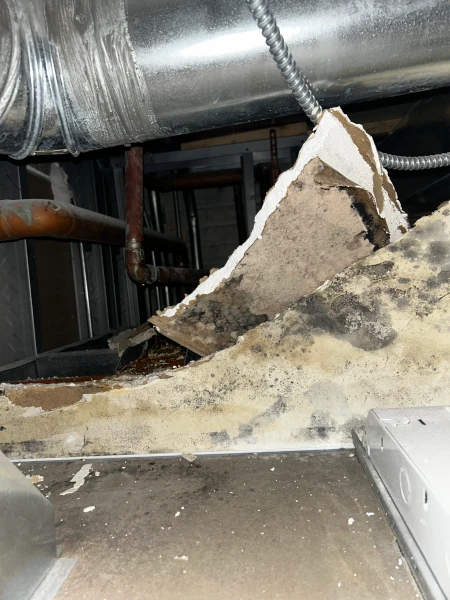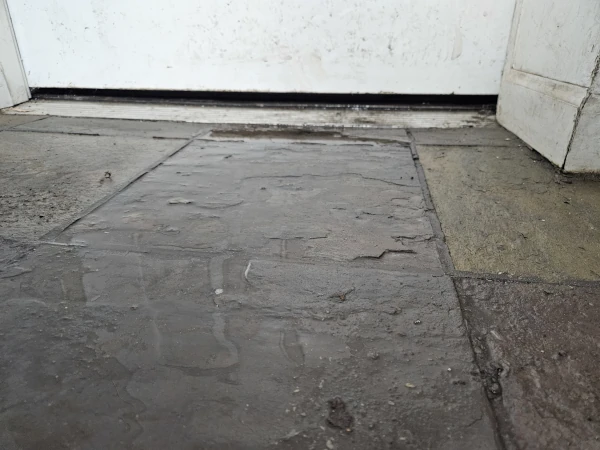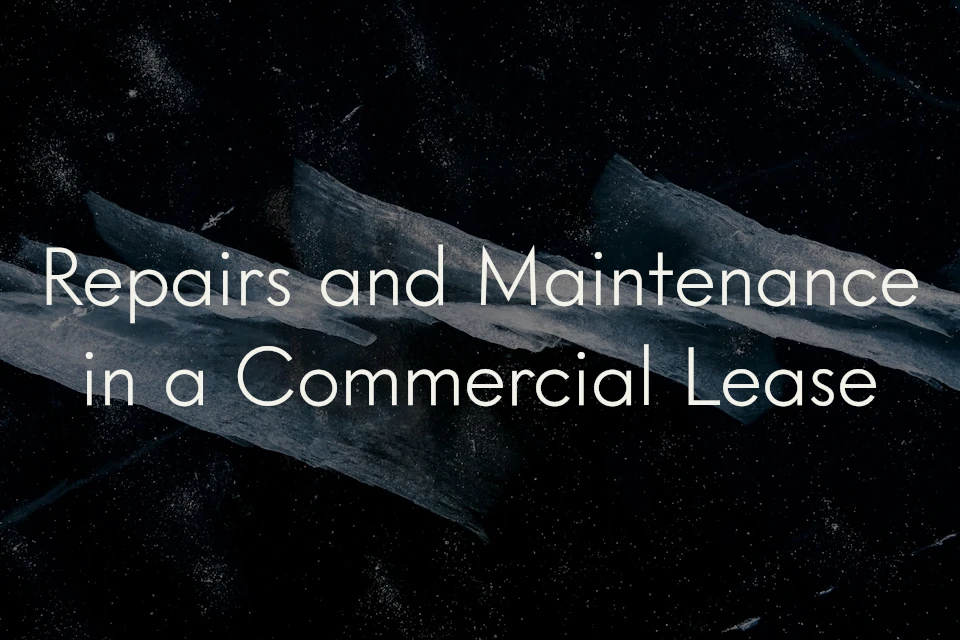Is the landlord or tenant responsible for repairing damage?
- It’s important to understand and negotiate who is responsible for maintenance and repairs when renting commercial property.
- Tenants are often on the hook for unexpected damage to their office or retail space.
- Repair and Maintenance clauses often favor landlords, but savvy tenants can negotiate them.
Imagine you are the owner of a small dance academy on the Northwest side. You come in to open the school on a cold winter day and find that a pipe burst overnight, leaking water everywhere. You just signed the lease a couple of months ago, so you have the landlord’s number handy. You call them up and let them know about the problem – and the landlord informs you that you are responsible for fixing the damage. What???

We see this situation all too often. Many small business owners don’t know that they can negotiate who is responsible for the repairs and maintenance before entering their lease, and that if they don’t, they often will be responsible for all of those maintenance and repairs. In many cases, commercial landlords will present their leases as “standard” and get tenants to sign without understanding what they will be responsible for.
In the best-case scenario, the commercial tenant has consulted with an experienced business law attorney to understand and negotiate the lease before signing so that they know what potential damages they would be responsible for repairing. But, if you find yourself in this scenario, you should immediately consult an attorney to verify what your responsibilities are, even before assessing the amount of water damage you might be on the hook for!
What is the Repairs and Maintenance Clause?
This clause, also called the “landlord responsibilities”, “tenant responsibilities”, “Landlord or Tenant Maintenance and Repairs”, or just “Maintenance”, outlines who will be responsible for what regarding repair and maintenance of the leased premises. For example, who pays for maintaining the parking lot or repairing a roof leak?
Negotiating the Repairs and Maintenance Clause
Everything is negotiable in a commercial lease. However, in our experience, “fair” leases (which often need negotiating for) typically share some features.
For example, the landlord typically remains responsible for structural elements like the foundation, walls, and roof, and for mechanical, electrical, and plumbing systems shared by more than one tenant. Even if the tenant is on the hook for a lot of maintenance and repairs within their portion of the space, reasonable landlords will typically agree to this because any maintenance or repairs to the building itself may impact more than one tenant. And of course, if the building has common areas, the landlord should be responsible for maintaining and repairing those. But as we’ll describe below, your lease can require you to pay a portion of the costs for maintaining and repairing common areas.
How to Limit the Tenant’s Repair and Maintenance Costs: Who pays to replace the HVAC?
If you’ll be responsible for the maintenance and repairs within your space, which is common in commercial leases, you’ll want to clearly negotiate a few terms and take a few steps to help lower those costs:
- First, you want the landlord to have to deliver the property in good condition and up to any laws or regulations that apply.
- Second, you want to define whether there are exceptions, such as for latent defects, or maybe institute a dollar limit on how much the tenant can be responsible for.
- Third, we often recommend that the tenant gets an inspection before signing the lease. This can help catch any defects or conditions that prevent the property from being up to code, areas that are likely to need repair soon, like an old HVAC system, and other issues with the property.

Payment for Repairs and Maintenance
Another determinant of who is responsible for repairs and maintenance is the rent form of the lease, because even if the landlord is responsible for maintenance, the cost of the maintenance may be passed on to the tenant.
Some leases are “gross” leases, meaning the tenant pays the base rent and maybe some utilities, and that’s it. We don’t see many gross leases, because landlords often want to pass additional costs onto the tenant, although they are more common in some areas like office spaces.
At the other end of the spectrum, some leases are “triple net” (also called “NNN” or “net net net”), meaning the tenant pays rent, utilities, and a portion of the real estate taxes, property insurance, and maintenance for the property.
There are also a lot of variations between the two, like modified gross and double net and other variations that fall somewhere in the middle of those two extremes.

The bottom line is that you want to have the repairs and maintenance clauses within the lease thoroughly reviewed and you can negotiate them.
Read more about leases and related business needs at the following links:

